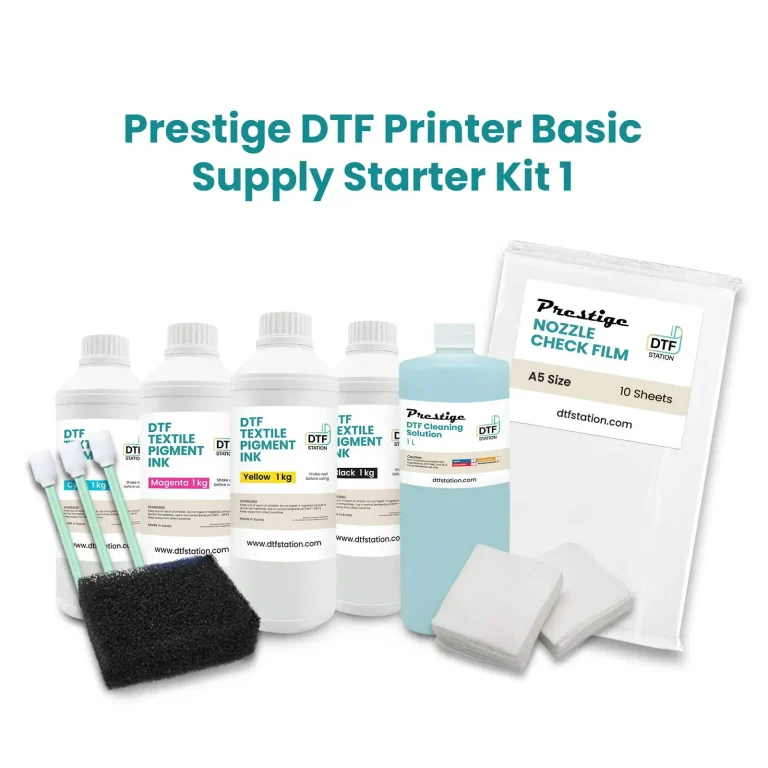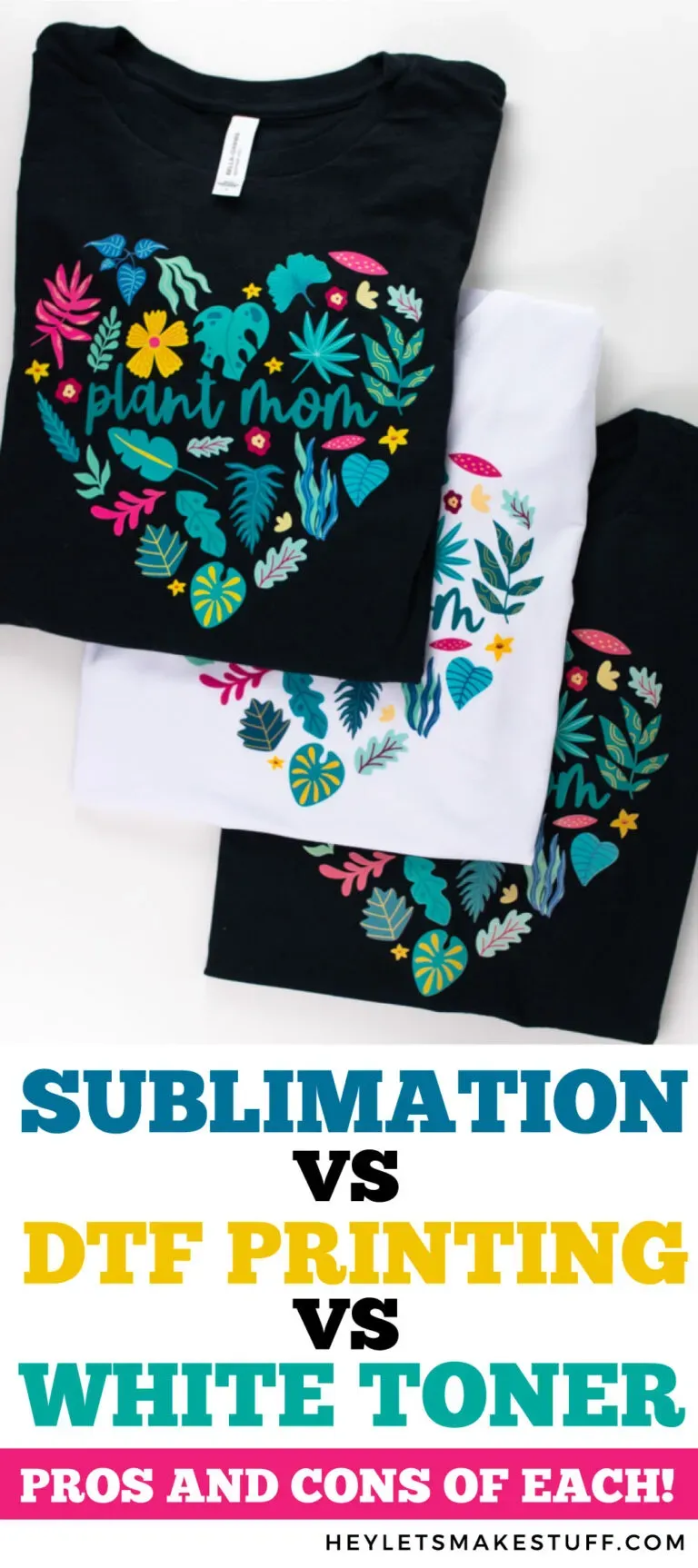
In the dynamic realm of garment printing, DTF transfers—known as Direct to Film transfers—are revolutionizing the way custom designs are showcased on apparel. This innovative method allows for vibrant colors and crisp details that are difficult to achieve with traditional techniques. As the market for custom apparel continues to grow, understanding DTF technology becomes essential for businesses striving to stay competitive. With its ability to print on various fabric types and produce high-quality prints, DTF printing is gaining traction among entrepreneurs and established brands alike. In this guide, we will explore the transformative benefits and applications of DTF transfers, helping you unlock new potential for your printing endeavors.
Direct to Film printing offers an exciting alternative in the world of textile decoration, effectively marrying cutting-edge technology with artistic expression. Often hailed for its versatility, this printing technique enables businesses to produce high-quality designs on a multitude of fabric types, from cotton to synthetic blends. Custom garment embellishment has never been easier, as this method provides both a stunning visual appeal and the soft feel desired by consumers. With the ability to achieve intricate patterns and vivid colors, the popularity of Direct to Film transfers is on the rise, reshaping the landscape of custom apparel production. In this comprehensive guide, we will delve into the many facets of DTF technology, exploring its applications and advantages within the garment printing industry.
Understanding the Basics of DTF Printing
DTF printing, which stands for Direct to Film printing, is a modern method that has quickly gained traction in the garment printing industry. This innovative process allows for high-resolution designs to be printed directly onto a special film, which can then be transferred to various fabrics. One of the unique aspects of DTF transfers is their compatibility with a wide range of materials, including cotton, polyester, and blends, making it a versatile choice for businesses looking to produce custom apparel.
The DTF printing process involves multiple steps, beginning with the use of a specialized printer to apply eco-solvent or water-based inks onto the film. After the print is completed, an adhesive powder is applied to the wet ink, ensuring that the design will adhere thoroughly to the fabric during the heat press application. This method not only produces vibrant, detailed designs but also offers a soft hand feel on garments, unlike other, heavier transfer techniques.
Advantages of DTF Transfers for Custom Apparel
The advantages of DTF transfers are significant, particularly for businesses operating in the custom apparel sector. One of the key benefits is the exceptional print quality that DTF technology provides. The results are characterized by vibrant colors and the ability to reproduce intricate patterns with precision, making them ideal for custom orders that demand a high level of detail.
Furthermore, DTF transfers are considered a cost-effective printing solution, especially for small to medium-sized enterprises. The low initial investment required for DTF equipment, coupled with minimal waste during production, allows companies to keep their costs down while still producing high-quality garments. This efficiency is especially appealing to businesses looking to quickly adapt to changing market demands.
The Process of Creating DTF Transfers
Creating DTF transfers involves a systematic approach that ensures the final product meets high-quality standards. Initially, a suitable design is created digitally, which is then transferred to a DTF printer. The printer uses specialized inks that are designed to adhere well to the film and later to the fabric, ensuring longevity and durability in the finished design.
Once the design is printed on the film, an adhesive powder is applied while the ink is still wet. This adhesive is crucial as it bonds the design to the fabric during the heat pressing phase. In this stage, consistent heat and pressure are applied, ensuring that the transfer remains intact and maintains its vividness wash after wash. This process highlights why many businesses are turning to DTF transfers for reliable and striking prints that withstand the test of time.
Innovations and Trends in DTF Technology
As the demand for DTF printing continues to rise, so do the technological advancements associated with it. New models of DTF printers are being developed that not only enhance printing speed but also improve color accuracy, allowing for an even wider range of applications in garment printing. These innovations allow businesses to meet customer demands more efficiently, thereby increasing their overall productivity.
Additionally, many companies in the DTF printing space are focusing more intently on environmentally sustainable practices. The shift towards eco-friendly inks and biodegradable films speaks to a growing consumer awareness about sustainability. This focus not only appeals to environmentally-conscious customers but also positions businesses favorably in the constantly evolving market.
Typical Uses of DTF Transfers in Fashion
DTF transfers are becoming increasingly popular across a multitude of fashion applications. Whether it’s creating custom t-shirts for events, fashionable hoodies, or promotional items like bags and hats, the versatility of DTF printing allows for endless possibilities in apparel design. This method is particularly beneficial for businesses looking to take on larger orders with complex designs, providing a reliable way to deliver stunning results.
Moreover, in the competitive fashion landscape, DTF technology empowers designers to express their creativity without limitations. The ability to produce detailed designs with vibrant colors makes DTF an attractive choice for artists and brands alike, allowing them to stand out in a crowded marketplace. As trends continue to evolve, many are adopting DTF printing to stay ahead and appeal to the ever-changing preferences of consumers.
The Future of DTF Transfers in the Apparel Industry
Looking forward, the future of DTF transfers appears promising as more businesses recognize the advantages it offers. The integration of cutting-edge technology, coupled with an increasing consumer demand for custom and high-quality garments, indicates that DTF printing will play a central role in the evolution of the apparel industry. Companies that embrace this innovative method will likely have a competitive edge in offering unique, bespoke products.
As DTF technology continues to advance, we can expect to see even more sophisticated applications, such as customizable options for customers to design their clothing. This not only enhances customer engagement but also cultivates brand loyalty as consumers appreciate the personal touch in their apparel choices. The ongoing developments in DTF transfers are set to redefine the standards of custom garment printing, making it an exciting field to watch for both businesses and consumers alike.
Frequently Asked Questions
What is DTF printing and how does it work?
DTF printing, or Direct to Film transfers, is an innovative garment printing technique that involves printing designs on a special film using a printer. The process includes applying eco-solvent or water-based inks onto the film, covering the wet ink with adhesive powder, and then heat pressing the film onto the fabric. This method allows for vibrant colors and detailed designs to be transferred efficiently onto various materials.
What are the advantages of using DTF transfers for custom apparel?
DTF transfers offer numerous advantages for custom apparel, including versatility across materials like cotton and polyester, excellent print quality with vivid colors, a soft hand feel that enhances comfort, and cost-effectiveness, particularly for small businesses. These benefits make DTF technology a preferred choice for high-quality garment printing.
Can DTF technology be used for different types of garments?
Yes, DTF technology is highly versatile and can be used for various types of garments including t-shirts, hoodies, and other apparel items. It is particularly effective for producing large orders with intricate designs, making it an ideal solution for custom apparel production.
How does DTF printing compare to traditional printing methods?
DTF printing differs from traditional methods like screen printing and direct-to-garment (DTG) printing by offering improved versatility, higher color accuracy, and finer detail reproduction. Additionally, DTF technology minimizes waste and requires a lower initial investment, making it a more efficient option for custom garment printing.
What are the market trends influencing DTF transfers?
Current market trends influencing DTF transfers include increasing demand for customized apparel, innovations in DTF printing equipment leading to faster and higher quality outputs, and a growing emphasis on environmental sustainability with the use of eco-friendly inks and biodegradable films in the printing process.
What applications benefit from DTF transfers beyond apparel?
Beyond custom apparel, DTF transfers are effectively used for promotional items like hats and bags, as well as in fashion and accessories. The ability to create intricate designs makes DTF technology advantageous in various niches, enhancing brand visibility and product differentiation in the marketplace.
| Key Aspects | Details |
|---|---|
| What are DTF Transfers? | A printing technique where designs are printed on films and then transferred to textiles, offering versatility and high-quality results. |
| Process of DTF Transfers | 1. Printing with eco-solvent or water-based inks on film. 2. Applying adhesive powder. 3. Heat pressing the film onto fabric. |
| Advantages | – Versatile material compatibility. – Excellent print quality. – Soft hand feel. – Cost-effective solution for various business sizes. |
| Key Trends | – Rapid market growth for custom apparel. – Innovations in DTF printer technology for speed and accuracy. – Focus on environmental sustainability with eco-friendly materials. |
| Applications | – Custom apparel (t-shirts, hoodies). – Promotional items (hats, bags). – Fashion and accessories with intricate designs. |
Summary
DTF Transfers are transforming the landscape of apparel printing, enabling businesses to produce vibrant, high-quality designs efficiently. This technology not only provides versatility in material compatibility but also ensures a soft hand feel that enhances garment comfort. As market demands for unique, customized apparel continue to grow, understanding and implementing DTF Transfers can position companies at the forefront of this evolving industry. By leveraging advancements in DTF technology, businesses can offer superior products while embracing sustainability, thus appealing to a conscious consumer base. Ultimately, embracing DTF Transfers is not just about keeping up with trends; it’s about seizing opportunities for innovation and growth in the competitive garment sector.




